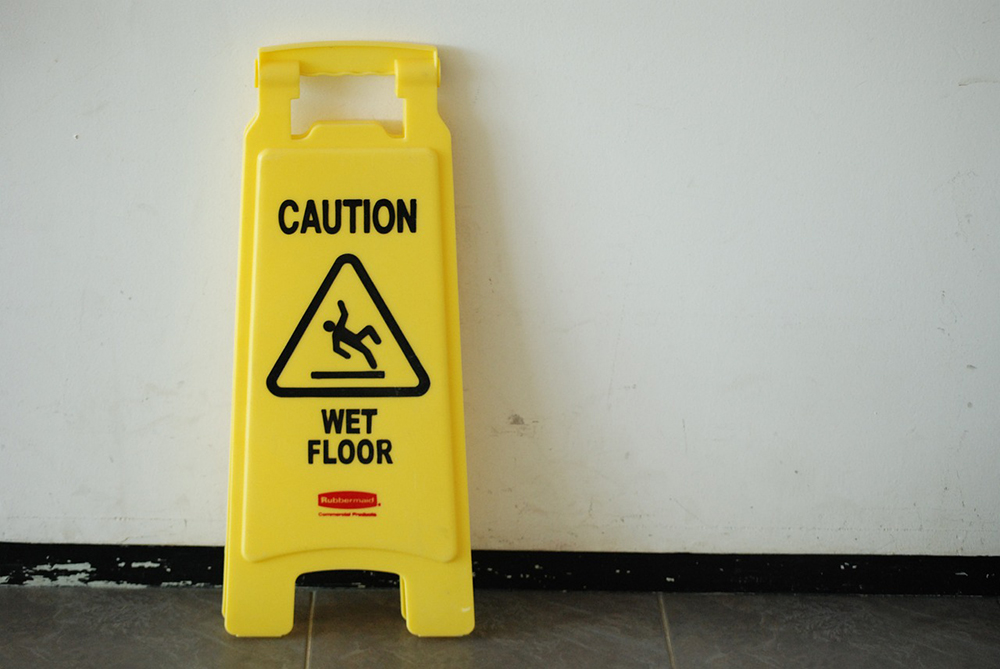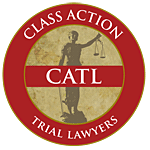
Trip and fall accidents might be used for a quick joke in popular television shows and movies, but they are far more terrifying in real life. An unexpected fall can leave you seriously injured, unable to work, and struggling to keep up with your daily life.
Falls send 8 million people to the emergency room every year. Of those, more than 1 million are specifically trip and fall accident victims, accounting for 12% of all fall-related emergency room trips.
By the end of this article, you might have a different perception of trip and fall accidents, including which types of flooring pose the most danger.
Injuries Associated With Trip and Fall Accidents
Head injuries are the most severe injuries associated with trip and fall accidents. These are often the result of unexpectedly striking your head against the floor or another object on your descent. Some of the most common types of head injuries in fall accidents include:
- Concussions
- Cracked skulls
- Brain hemorrhages
Trip and fall accidents are typically sudden, which does not allow you any time to properly react. Shielding your head with your arms or grabbing onto nearby objects to steady yourself can be virtually impossible when a sudden trip catches you off guard.
You are also vulnerable to other types of injuries in a trip and fall accident:
- Broken bones
- Lacerations
- Sprained wrists and ankles
- Spinal cord injuries
While falls can happen in virtually any environment, trip and fall accidents are much more likely to occur when you are walking on certain types of flooring.
Dangerous Flooring Increases Fall Risks
Store and property owners should do everything within their ability to decrease the risk for falls. Unfortunately, we know that these individuals do not always do the right thing.
Since you cannot always rely on safe flooring, you should familiarize yourself with the types of dangerous floor materials you might encounter while out and about.
Floor Mats
Most stores, restaurants, hospitals, and other establishments have floor mats just inside their front entrances. Floor mats typically help keep the entrance area clean by catching dirt, mud, snow, ice, and other debris that patrons track in on their shoes.
Poor-quality mats or mats that have not been properly maintained can do more harm than good, though. On a rainy day, these mats may become drenched in water, which reduces their efficiency. You are much more likely to trip and fall on a water-soaked floor mat than on one that is dry and positioned correctly.
Overuse can cause floor mats to buckle and lift in unexpected places. When your shoe catches on one of these areas, you can fall and suffer a serious injury. Those over the age of 65 are especially vulnerable to broken bones when falling on an uneven floor mat.
Old Carpet
Carpet does not last forever. No matter how durable it might appear, it should be replaced every 5-15 years, although manufacturers generally advise consumers to replace carpet after ten years. Not only does old carpet start to lose its appearance over time, but it can also pose a fall risk.
You can fall by tripping on ripped or torn carpet that has created a miniature obstacle in a place where there should be none. Falling on carpet does not soften the severity of any injuries you might suffer, either.
You might also be more likely to suffer an abrasion like carpet burn when falling on carpet than compared to smooth surfaces like tile or linoleum. An abrasion is when the skin is rubbed or scraped off.
Never wait until the carpet is actively ripping or tearing to replace it. Instead, you’ll know it’s time to replace it when you start seeing some of the following signs:
- Fading or color loss
- Ripples
- Matting
- Wrinkles
Uneven Flooring or Stairs
You expect floors to be even when walking around the grocery store. Even minor differences in floor heights can be enough to throw off your balance or cause your shoe to hit the edge of the floor as you travel from lower to higher heights.
The same goes for stairs. All it takes to create a trip and fall hazard is for one stair to be slightly taller or lower than the rest.
You can always minimize the risk for trip and fall accidents on stairs by:
- Installing handrails on both sides
- Making sure carpet is attached firmly to every step
- Clearing clutter from steps
- Installing adequate lighting
While this might make stairs safer, these actions are still not enough to eliminate the risk for a fall on an uneven step.
Wet Floors
Wet floors are perhaps the most well-known slip, trip, and fall hazard. Spilled or pooling liquids decrease the traction between your foot and the floor, creating the prime opportunity for a fall. Not all floors pose the same risk when wet, though. Floors that tend to get the most slippery when wet include:
- Vinyl flooring
- Pressed concrete
- Linoleum flooring
- Porcelain tiles
- Marble flooring
Although there are exceptions, a good rule of thumb is to watch out for shiny floors. Compared to flooring types that have matte or dull finishes, shiny flooring tends to be more slippery when wet. However, you can just as easily suffer a fall on a non-shiny floor that is coated in water or other slippery substances.
Getting Back on Your Feet After a Trip and Fall Injury
You know that you need help after a serious trip and fall accident, but maybe you’re not sure where to start. Filing a premises liability lawsuit is generally one of the most effective ways for you to hold a negligent property owner responsible for your injuries while also collecting compensation necessary for your recovery.
There are many unique challenges in premises liability claims, though. You’ll be expected to definitively prove that the property owner is to blame for your injuries, including demonstrating the trip and fall dangers of the specific flooring type, while also handling paperwork, deadlines, and valuing the worth of your claim.
At Golden Law Office, we know what an uphill battle this can be, but it is not a journey you have to take on your own. Get in touch today to schedule a free evaluation of your case.





